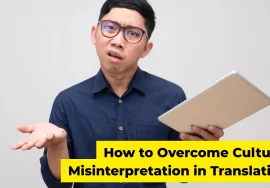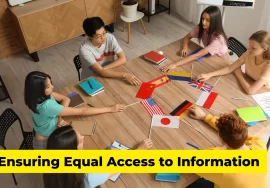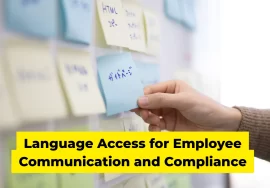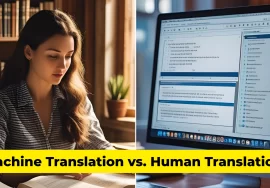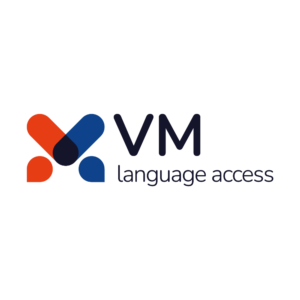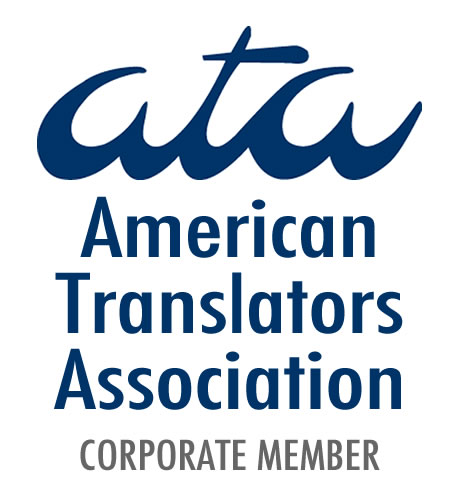
Why Human Translators Are Better Than Google Translate
In today’s world, technology is rapidly advancing and transforming every industry, including the field of translation. One of the most widely used tools in translation is Google Translate, a free and easily accessible service that allows users to translate text between languages with just a few clicks. But as convenient as it may seem, Google Translate and similar machine translation tools still face significant challenges in delivering accurate, high-quality translations. While these tools have undoubtedly made strides in recent years, human translators remain essential for producing precise, culturally sensitive, and contextually appropriate translations. In this article, we’ll explore the key reasons why human translators are better than Google Translate, especially in terms of accuracy, context, and nuances.
Google Translate: Convenience, but with Limitations
Google Translate has come a long way since its inception, now offering translations for over 100 languages. Its popularity is partly due to its convenience. In an age where everything is accessible at the touch of a button, it’s tempting to rely on Google Translate to handle simple translation tasks. With its ability to instantly translate text and even whole documents, it’s an incredibly useful tool for quick, everyday translations.
However, the tool’s accuracy issues are well-known. While it works relatively well for basic phrases and simple sentences, it often falters when it comes to more complex sentences, technical jargon, idiomatic expressions, and cultural context. This is where human translators truly stand out.
Google Translate Accuracy Issues: Why Machine Translation Falls Short
Despite Google Translate’s impressive capabilities, it’s far from perfect. The main problem lies in its inability to truly understand the context and meaning of a sentence. While it can translate individual words or phrases, it doesn’t have the deeper comprehension necessary to fully grasp the intricacies of language.
Lack of Contextual Understanding
One of the most significant drawbacks of Google Translate is its failure to understand context. Words and phrases can have multiple meanings depending on the surrounding text, and Google Translate often struggles to choose the correct interpretation. For example, the word “bank” can refer to a financial institution, the side of a river, or a place to store something. Without context, Google Translate might not choose the right meaning, leading to a translation that sounds strange or incorrect.
Human translators, on the other hand, understand the importance of context. They take into account the surrounding words, the topic, and the intended message, which allows them to produce translations that are not only accurate but also appropriate for the situation.
Challenges with Idiomatic Expressions and Phrasal Verbs
Another area where Google Translate falls short is in translating idiomatic expressions, phrasal verbs, and slang. These are often the most challenging aspects of language for machine translation tools to handle. For instance, phrases like “break a leg” or “hit the nail on the head” don’t have direct translations in many languages. Google Translate might try to translate these expressions literally, leading to translations that make no sense in the target language.
Human translators are trained to recognize idiomatic expressions and understand their intended meanings. They can adapt these expressions to the target language in a way that conveys the same message, ensuring that the translation sounds natural and culturally appropriate.
Cultural Sensitivity and Nuance
Language is deeply connected to culture, and translations that ignore cultural nuances can be misleading, offensive, or simply awkward. Google Translate, however, doesn’t have the ability to understand or incorporate cultural context into its translations. This can be particularly problematic when translating content for marketing, legal documents, or sensitive communications.
Human translators, on the other hand, are not only fluent in the language but are also aware of the cultural nuances that affect communication. They know when to adjust the tone, word choice, and style to ensure the translation resonates with the target audience. For example, a phrase that works well in one culture might be inappropriate or misunderstood in another. Human translators take these differences into account, which is something that Google Translate simply cannot do.
The Role of Human Translators: Expertise, Judgment, and Skill
Human translators are much more than just bilingual individuals. They are experts in their field, with a deep understanding of both the source and target languages, as well as the cultures they represent. Their expertise allows them to make nuanced decisions that machine translation tools cannot.
Contextual Judgment and Tone
One of the key strengths of human translators is their ability to judge the tone and style of the text they are translating. Whether it’s a formal legal document, a casual conversation, or a marketing piece, human translators can adjust the tone to match the intended message. Google Translate, on the other hand, often fails to capture the appropriate tone, leading to translations that feel robotic or disconnected from the original message.
For instance, in a legal context, precise language is crucial, and even the slightest mistake can have significant consequences. A human translator understands the importance of legal terminology and the need for accuracy, while Google Translate might produce a translation that is legally ambiguous or misleading.
Cultural and Subject Matter Expertise
In addition to their linguistic skills, human translators often specialize in specific fields, such as medicine, law, finance, or technology. This specialization allows them to accurately translate technical terminology and complex concepts. Google Translate, while useful for general translations, struggles with highly specialized language and may produce incorrect or unclear translations in these areas.
For example, a medical document that requires precise translation of medical terms needs the expertise of a human translator who understands the intricacies of medical language. Google Translate might confuse terms or fail to provide the correct translation, leading to potential misunderstandings or even dangerous consequences in the case of healthcare-related translations.
Creativity and Emotional Expression in Translation
Another area where human translators excel is in translating creative works, such as literature, advertising, or entertainment. Google Translate may struggle with the emotional depth, humor, and cultural references in creative texts, resulting in translations that are flat or lose their original impact.
Human translators, on the other hand, have the creativity and sensitivity to capture the tone and emotional resonance of the original work. They can adapt jokes, wordplay, and idiomatic expressions in a way that feels natural in the target language, maintaining the essence of the original content.
The Future of Translation: Can Humans and AI Work Together?
While human translators are still essential for high-quality, accurate translations, it’s important to note that AI and machine translation tools like Google Translate can play a role in the translation process. The future of translation may not be about choosing one over the other, but rather about finding ways for humans and machines to work together.
AI can assist human translators by handling repetitive tasks, providing quick translations for reference, or even suggesting potential translations. This allows human translators to focus on more complex tasks that require their expertise, judgment, and creativity. In this way, AI can be a valuable tool for human translators, but it should never replace them entirely.
Despite the advances in machine translation, human translators remain the best choice for accurate, culturally sensitive, and high-quality translations. Their ability to understand context, navigate nuances, and adapt to different cultural settings sets them apart from AI tools like Google Translate, which still struggle with many aspects of language.
Whether you’re translating legal documents, marketing materials, medical records, or creative works, human translators offer the expertise and judgment needed to produce translations that are not only accurate but also appropriate for the target audience. While Google Translate may be useful for basic tasks, for any serious translation work, the expertise and skill of a human translator are indispensable.
At the end of the day, language is more than just words; it’s about communication, connection, and understanding. Human translators bring that understanding to the table in a way that AI simply can’t match.

